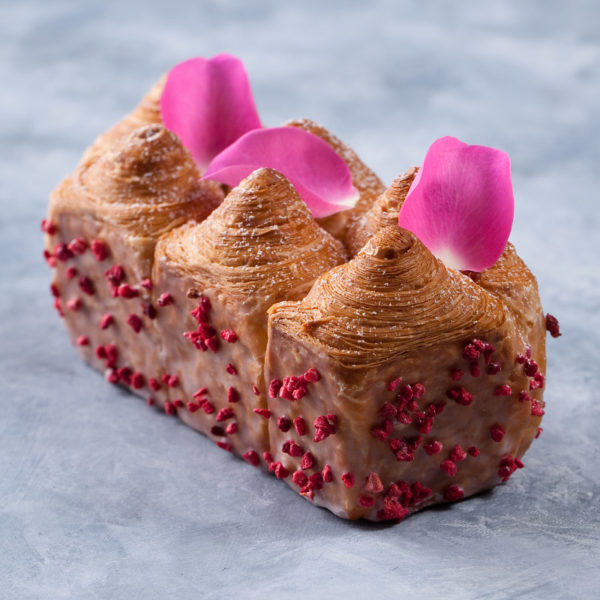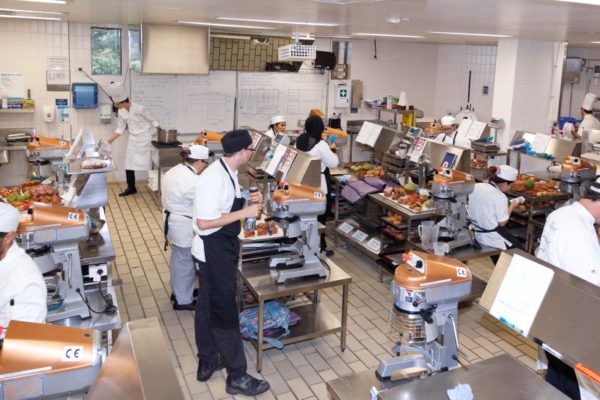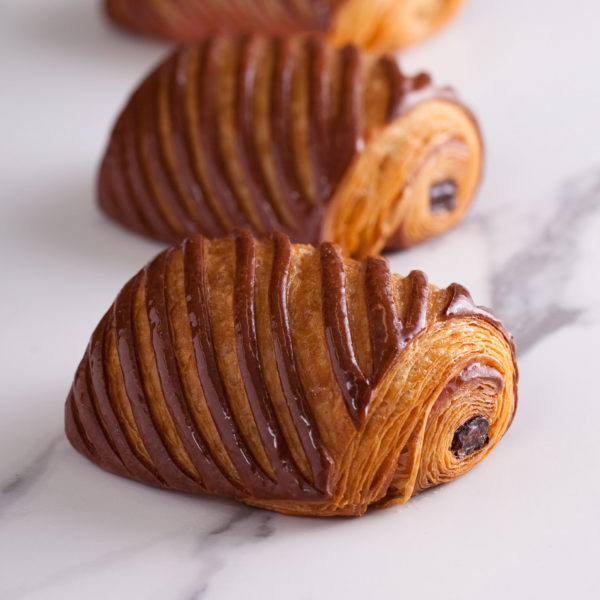A Case Study with Australia Patisserie Academy
 In the world of commercial food photography, there are few, if any, food types that are more colourful, differently textured, variably shaped, and, of course, more appetising than patisserie.
In the world of commercial food photography, there are few, if any, food types that are more colourful, differently textured, variably shaped, and, of course, more appetising than patisserie.
But that’s the challenge – especially when your client is the Australia Patisserie Academy (part of TAFE in NSW). And even more especially when, the photoshoot location is a one of the Ryde campus’s commercial kitchens.
In this sort of environment, you don’t get lucky and just happen upon the perfect shot: all stainless steel work surfaces and flat kitchen lighting. The lighting or shooting surfaces are never good. To make the food look delicious and bring out the textures and colours, the photographer must make their own luck. But that’s all part of it.
Back to my client. Being a patisserie chef involves a lengthy, and often on-going, training and certification process, and the Australian Patisserie Academy offers high end, two to three day, short courses aimed at patisserie professionals already in the industry looking to refine and perfect their skills.

To run their courses, the Academy brings in top quality patisserie chefs from around the world, including such famous names as Karim Bougi, Alexis Bouillet, and Johan Martin. The patisseries they produce are, as a result, so top quality and world class that no food stylist is needed on the shoot – the finished product is already perfectly presented.
But can it be perfectly shot?
Just as with any shoot, the important thing is to bring the right equipment. In this case, the right and lighting, shooting surfaces, and backgrounds.
Commercial kitchen stainless steel workbenches and lighting are all well and good when it comes to food production, but they are less than helpful when it comes to creating the appropriate photographic image of the food itself. The surfaces are harsh, the backgrounds are industrial, the lighting is flat and can make food look green or blue – not exactly appealing. The right equipment gives you control.
 And, when it comes to patisseries in particular, photographic control is vital. Each patisserie product is different; different in colour, texture, and shape. For each product, the light, surface, and background need to be carefully adjusted and controlled to bring out the qualities of each specific product.
And, when it comes to patisseries in particular, photographic control is vital. Each patisserie product is different; different in colour, texture, and shape. For each product, the light, surface, and background need to be carefully adjusted and controlled to bring out the qualities of each specific product.
However, having said that, the colour of the food must look natural. Too often, photographers overdo it and end up making the final food image look radioactive.
That’s frequently that’s a problem in post production and the result of over saturation of the image.
In post production we focus on depth, contrast and bringing out the texture while retaining the natural colour of the food. We touch up any cracks that may have appeared during the baking process. We clean up any crumbs or flaws that appear in the final presentation. And we crop to size for whatever advertising media the client requires – in this particular case, we cropped the food photos for Instagram and other social media, web hosting, and print brochures.
We’ve done many shoots for the Australia Patisserie Academy, and in addition to the actual product images we also do live action shots of the chefs working and creating, and of the students being presented with their certificates at the end of the course.
Whatever we do, our aim is always to present a high quality image that matches the high quality of our client, their chefs, and their patisseries.
